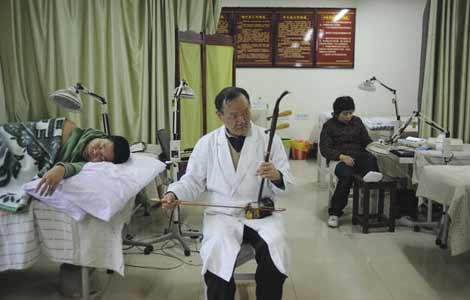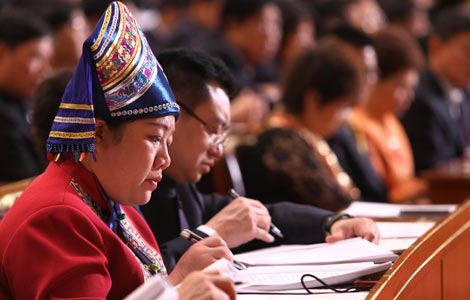 |
|
|
|
|||||||||||
BEIJING/SHENZHEN - Chinese and American physicists have made a pivotal breakthrough in the study of neutrinos, which may explain the predominance of matter over antimatter in the universe.
The research on the subatomic particles, which was conducted at a nuclear power plant in south China, is expected to define the future of particle physics.
The findings come from the Daya Bay Reactor Neutrino Experiment, which was conducted close to the Daya Bay Nuclear Power Station in Guangdong Province.
Based on data collected from two powerful nuclear reactors, multinational scientists have been able to confirm and measure a third type of neutrino oscillation, Wang Yifang, a co-spokesperson for the experiment and head of the Institute of High Energy Physics (IHEP) of the Chinese Academy of Sciences (CAS), said at a press conference Thursday in Beijing.
Neutrinos, the wispy particles that flooded the universe in the earliest moments after the Big Bang, are continually produced in the hearts of stars and and other nuclear reactions.
Traveling at close to the speed of light, the three basic neutrino "flavors" -- electron, muon, and tau neutrinos, as well as their corresponding antineutrinos -- mix together and oscillate. This activity, however, is extremely difficult to detect.
Two types of oscillation, solar and atmospheric neutrino oscillation, were confirmed in experiments conducted in the 1960s and 1990s, while the third type of oscillation had not been detected prior to the Daya Bay experiment.
From last December, the scientists in the Daya Bay experiment observed tens of thousands of interactions of electron antineutrinos caught by six detectors installed in the mountains adjacent to the powerful nuclear reactors, Wang said.
The data revealed for the first time the strong signal of the effect that the scientists were searching for -- a so-called "mixing angle" named theta one third, a new type for neutrino oscillation, he said.
"It is surprisingly large," Wang said. "Our precise measurement will complete the understanding of the neutrino oscillation and pave the way for the future understanding of matter-antimatter asymmetry in the universe."
Scientists believe the intense heat of the Big Bang should have forged equal amounts of matter and its "mirror image" antimatter. But as we live in a universe composed overwhelmingly of matter today, physicists have been puzzled by the apparent "disappearance" of antimatter.
The findings have been submitted to the Physical Review Letters for publication, Wang said.
Chinese physicists proposed to look for the third type of neutrino oscillation by studying neutrinos produced by nuclear reactors and measure the amplitude of the oscillation due to the least-known mixing angle denoted by theta one-three, said Zhao Guangda, a CAS academician and director general of the China Society of High Energy Physics.
Zhao said the value of theta one-three would "determine the future of particle physics."
"The mystery of why antimatter disappears can be solved," Zhao said.
Co-spokesperson Kam-Biu Luk, a lead physicist at the U.S. Department of Energy Lawrence Berkeley National Laboratory and the University of California at Berkeley, said the study results would also represent a major contribution to understanding the role of neutrinos in the evolution of basic kinds of matter in the earliest moments after the Big Bang.
"We've had extraordinary success in detecting the number of electron antineutrinos that disappear as they travel from the reactors to the detectors two kilometers away," Luk said.
"The Daya Bay experiment is of crucial scientific significance, leading to a bright future for particle physics," said CAS academician Zhan Wenlong, who is also vice CAS president and president of the Chinese Physical Society.
China and the United States launched the Daya Bay experiment in 2006. It involves collaboration of 250 researchers from 39 global institutes including the IHEP, Lawrence Berkeley National Laboratory, Brookhaven National Laboratory, California Institute of Technology, Tsinghua University and Charles University in Prague.
Wu Ying, iPad, Jeremy Lin, Valentine's Day, Real Name, Whitney Houston, Syria,Iranian issue, Sanyan tourism, Giving birth in Hong Kong, Cadmium spill, housing policy

|

|

|

|

|

|